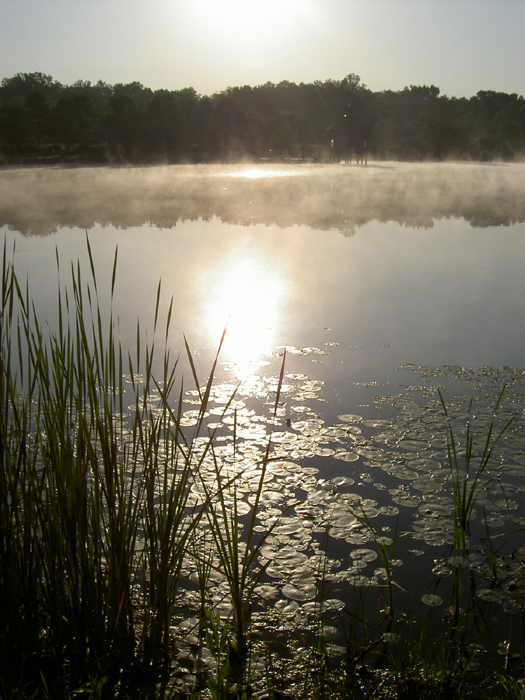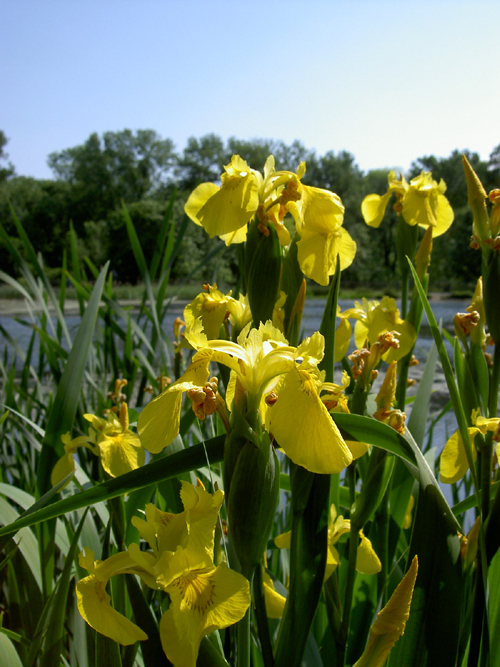We had no idea when we moved here that we were moving to a haven of sorts for wildlife in this area. The past few weeks have been full of wildlife, in more ways than we could have imagined. We’d heard from our neighbors that coyotes, foxes, and something which might have been a Bobcat had been seen in our town, but I found that a little hard to credit since the area is so densely populated. However, during one of our nightly walks, about a month ago, we were surprised by a Gray Fox running across the road, from one part of the park to another, a mockingbird in close pursuit.
This sighting was the beginning of a string of such events. A couple of weeks ago, we discovered a featherless baby bird on the ground in the park. The nest from which it had fallen was easily identifiable, but there were no signs of parent birds anywhere around, and there was another (dead) baby bird on the ground next to it. I decided to take it home rather than put it back in the nest, and I then spent the next few hours trying to find someone to take it. I eventually succeeded, with Gerda at Wildlife Rescue, Inc., telling us she’d be happy to wait up for us to arrive. The only problem: they’re located about an hour and a half away from DC, and we don’t own a car. Thank you, Flexcar!
By the time we were ready to go, the bird had thankfully realized it was night and gone to sleep, so I didn’t have to keep feeding it (I was feeding it bread soaked in water, which you are not supposed to do, but I didn’t have any dog or cat kibble). On the way up, we didn’t listen to the radio (it could wake up and stress out the bird) or use the air-conditioning (it could cool down and stress out the bird). For all that we were a little bit tense, the directions were easy to follow and the evening was a pleasantly mild one. We arrived to find Gerda waiting for us on the porch. We promptly delivered the bird (identified as a robin) to her, whereupon it woke up and was fed something more suitable: mush. Once the bird was settled, we were given a small tour, and enjoyed seeing the other young birds — wrens, screech owls, a cedar waxwing, and a red-shouldered hawk were the most unusual — and mammals. The little foxes were my favorite, perhaps since I had only recently seen one for the first time, but the baby possums in a pillowcase sack were cute as well.
Before we got back on the road we gave Gerda a hand bottle-feeding the fawns. This consisted mostly of us trying to hold onto the bottles while the baby deer hoovered them and trying not to flail around while the others licked the back of our knees. The experience was something akin to Gonzo eating a rubber tire to the tune of The Flight of the Bumblebee (just replace chewing with little deer licks). On our way back out of the barnyard, I managed to avoid getting head-butted in the rear by the donkey; I will only say that others of our party were not so fortunate. The final treat of the evening was seeing a Red Fox crossing the road on the way back to the highway. Before this month, only other time I’d seen a fox in the wild was over ten years ago, in Europe. We were on the Zürichberg, returning to the tram from the ice skating rink late one night, when the fox walked out onto the middle of the road, stopped and looked at us, and then continued on into the woods. It was snowing that night, and the fox looked silvery; it could have been a silver morph of a red fox, or it could have just been the snow and the light making it appear so.
After that experience, I wasn’t sure how much more wildlife excitement I could handle. Over the intervening two weeks, though, we’ve had two sightings in our yard. One was the gray fox: we heard yowling and came down to turn on the outside lights, and the fox paused by the back door and then ran off to the alley. The second was just a couple of nights ago: I heard rustling at the front of the house, turned on the outside lights, and watched a possum waddle off across the neighbor’s front yard, heading toward the park. I imagine they’re both attracted by the mulberry trees along our side border, as we’ve found fox scat at the side of the house under that tree.
I have to say, having our yard become part of the local fox’s territory has improved (and by that I mean, of course, diminished) the presence of cats in our yard. I can only hope that it’s eating the rats we saw in the autumn and spring, and not preying on our resident birds.

